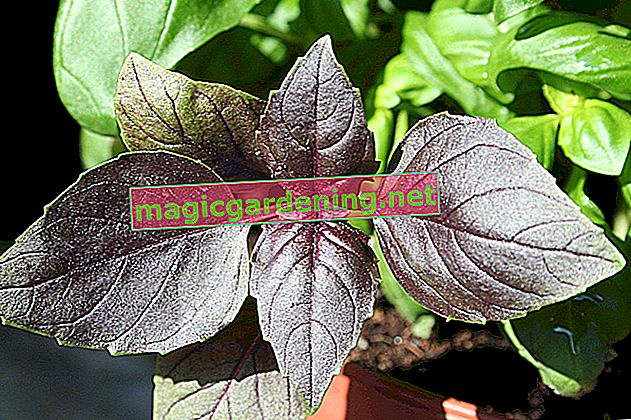
Not foreseen in Mother Nature's metaplan
No fuss and madness helps, hardy basil is not granted to the herb fans among the hobby gardeners. Immigrated from tropical regions with average temperatures of 20 degrees Celsius, Königskraut stops growing at 12 degrees Celsius. Even though hardy basil belongs to the realm of fables, that does not mean foregoing cultivation outdoors. So read on with confidence.
also read
- Which temperatures are relevant for basil culture?
- Under what conditions does basil grow?
- In this location, basil does its best
These strains brave cold, rainy weather
The vast majority of basil varieties prefer a location that is as warm as possible and protected from rain. Since lignified shoots impair the aroma content, experienced hobby gardeners also regularly cut back the plant and thus preserve its delicate, herbaceous habit. It is good to know that the following three varieties do not lose their taste despite the woody branches. At the same time, these royal herbs tolerate cool, rainy weather in summer without complaint:
- Wild purple basil
- African blue basil
- Indian basil 'Tulsi'
All three varieties have a majestic stature, purple or veined leaves and pink flowers. They all have what it takes to be a delightful feast for the eyes in every bed. Thanks to the gradually woody shoots, they do not lie on the ground after every summer downpour. As a downer, some hobby gardeners consider the only possible propagation through cuttings.
A lack of winter hardiness does not rule out perennial cultivation
Although basil leaves the sails below 10 degrees Celsius, this shortcoming does not necessarily mean that we have to do without a perennial culture. Königskraut thrives in his home country for several years. The chances of overwintering are therefore good if the plant finds the following conditions:
- a sunny window seat with temperatures of 18 to 22 degrees Celsius
- protected from cold drafts
- an alternately moist substrate, without the risk of waterlogging
- a dose of liquid organic fertilizer every 4 to 6 weeks
Since no flowers sprout during the winter, the harvest is limited to what is actually needed. Whole shoots with a length of 5 centimeters are still cut. From mid-May the royal herb moves into the garden or on the balcony for another aromatic outdoor season.
Tips & Tricks
Basil planted in the bed moves easily for the winter if the plant is put in the ground with a large bucket in May. Ideally, there are two handles on the edge of the pot so that you can easily pull the herb plant out of the ground in autumn to carry it to winter quarters.
GTH







